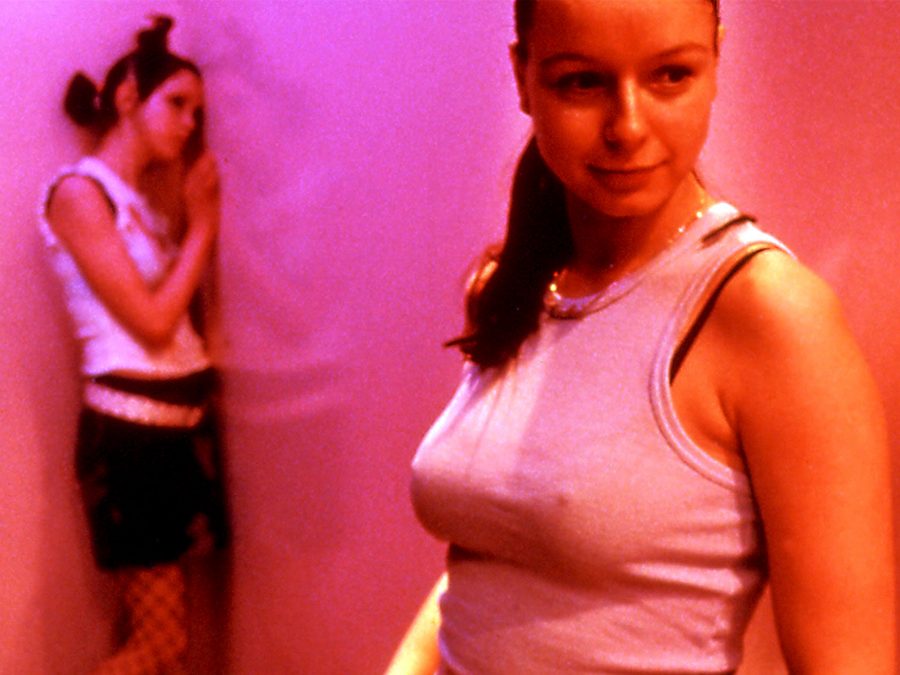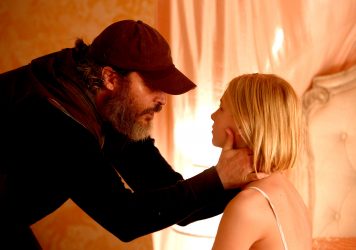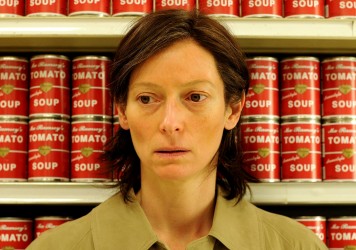
Who is Morvern Callar? She is a working-class supermarket employee who, after coming home to find her husband’s dead body and a suicide note, struggles with sorrow and a yearning to escape the inexorable tedium of her current lifestyle.
As is customary with Lynne Ramsay’s characters, Morvern (Samantha Morton) is by no means a paradigm of societal normalcy. She has a complexity that embodies the unpredictability and irrationality of human behaviour – especially when inflicted with grief. The entire film is drenched with this crushing realism whilst still managing to be visually poetic. Ramsay is a master at creating such a delicate balance.
The film begins with an unsettling stillness which, after the titular character’s face is lit up intermittently by a disconcerting red glow, abruptly reveals that she is lying motionless with her recently deceased spouse. This immersive opening is a haunting example of the director’s succinct visual style, she hones in on individual details as opposed to crafting elaborate concoctions of image and sound. It lends her work a beautiful rawness that brings to mind Robert Bresson’s similarly refined touch – as avowed by Ramsay in an interview with Criterion for the release of Ratcatcher.
The red hue, which in the opening is made by Christmas lights, is replicated throughout the film. For example, when a drug-fuelled haze of party lights sporadically illuminates Morvern’s face. The ongoing inclusion of this lighting effect in several of the film’s major scenes cleverly points to its importance as a visual signifier. It externalises her grief and displays it as a brooding presence that drastically varies in its intensity. One second she is relatively happy, the next she is overcome with immense anguish – as is evident when a playful bakery session with her best friend Lanna (Kathleen McDermott) is interrupted by her ominously shaking hands (all while the Christmas tree flashes in the foreground).
This is a perfect depiction of how grief can sucker punch you, and is a testament to how accurately Ramsay’s visual composition portrays the emotion throughout the film. The director captures how inner turmoil is rarely reflected in a person’s body language. One shot sees Morvern lying in bed, awake, while the reflection of raindrops stream down her cheek. This shot communicates her outer numbness as result of her general apathy.

It is obvious that Morvern’s life is stagnant, and it takes the death of her partner for her to fully realise it. We see her burn a pendulous looking oven pizza, and she drifts languorously through her place of work to the melancholic sound of Nancy & Lee. It’s when Morvern starts to act impulsively that we begin to understand who she really is. Whether it’s submitting her dead husband’s novel under her name, or booking a holiday with the money he left her.
Morvern’s decision to claim the novel as her own in born out of a mix of anger, love and grief-stricken irrationality. It is conveyed as a major turning point for her: she slowly overwrites her husband’s name with her own in a scene loaded with defiance. She sees a potential way of breaking the monotony of her life and a chance to form her true (or at least different) identity – a thought process Ramsay makes strikingly visceral by having every key pressed with an empowering conviction.
From this moment, Morvern grapples far more positively with grief as she begins to accept and embrace its reality. An ironic use of ‘I’m Sticking With You’ plays as she cleans up her bloodied apartment and moves her husband’s corpse into the bath. Despite blood spraying her face, Ramsay, with help from The Velvet Underground’s gentle melody, portrays the ordeal as cathartic and a sign of Morvern espousing her new identity. Another visual indication to her growing strength is the switch from the grey of her hometown to the sun-soaked outdoors.
When Morvern arrives in Spain, she joyously discovers an independent streak in herself that perhaps never existed before. She becomes more in tune with nature, and more detached from her old routine. She wants to swap the poolside holidays with obnoxious pint-slamming Brits for a more life-affirming experience. A point made clear as the camera watches her observe a deliberately-similar looking woman passed out leaning on a wall in a party-induced mess, then opt to swig a bottle of water.
This desire for a more sober, authentic experience is replicated in her ambiguous search for, in her own words, “something beautiful”. Morvern wants to be lost in a foreign country as it places her outside of her comfort zone and away from the life she wants to leave. Although complete resolution from grief is nigh on impossible, Ramsay shows us that a seemingly ordinary and anguish-wracked supermarket employee is as capable of leading a rich and wonderful life as you are – whatever position you find yourself in.
Published 8 Mar 2018

Joaquin Phoenix and director Lynne Ramsay combine forces to deliver a sensational cinematic sucker punch.

The You Were Never Really director talks framing violence and working with Joaquin Phoenix and Jonny Greenwood.

Lynne Ramsay’s first film for nine years is a dizzying visual trip anchored by Tilda Swinton’s superlative central performance.